Getting cabin fever? Need an outdoor break? No matter what time of year, a drive through Death Valley National Park will deliver! The landscapes are other-worldly, the views are breathtaking, and you can’t help but have fun!
California is one of those states that you just can’t believe how many different things there are to do there. Whether you are road-tripping, beach combing, finding a new foodie spot, or just soaking up the sun, California never dissapoints.
So when we woke up at 0’dark thirty in the morning in our warm, cozy hotel in Lone Pine near Manzanar, we had no idea what to expect on our drive into Death Valley National Park. We’d been to a few of the National Parks in California on this current road trip, but we were pretty sure Death Valley would be nothing like any of the others. And spoiler alert! We were right!
As we drove, we climbed and climbed up toward the park, we noted the elevation markers along the way. We reached 4900 feet at Townes Pass but with the pitch black night, the only thing we could see was the carpet of stars above us and the headlights on the road ahead. One thing we hadn’t expected was to climb this high. “Isn’t Death Valley the lowest point in North America?” we asked ourselves.
From there the road went down, down, down. We dropped nearly 5,000 feet in less than 17 miles. And the lower we got the lighter the sky became and the more alien the landscape was looking. We reached Stovepipe Wells and Mesquite Flat just as the sun’s first blush was coloring the eastern sky, perfect timing. From there we knew we were in for an amazing day.
In this article:
- Why go to Death Valley
- Best time to visit
- Weather in Death Valley
- Activity Rating
- Getting there
- Driving tips
- Best things to do
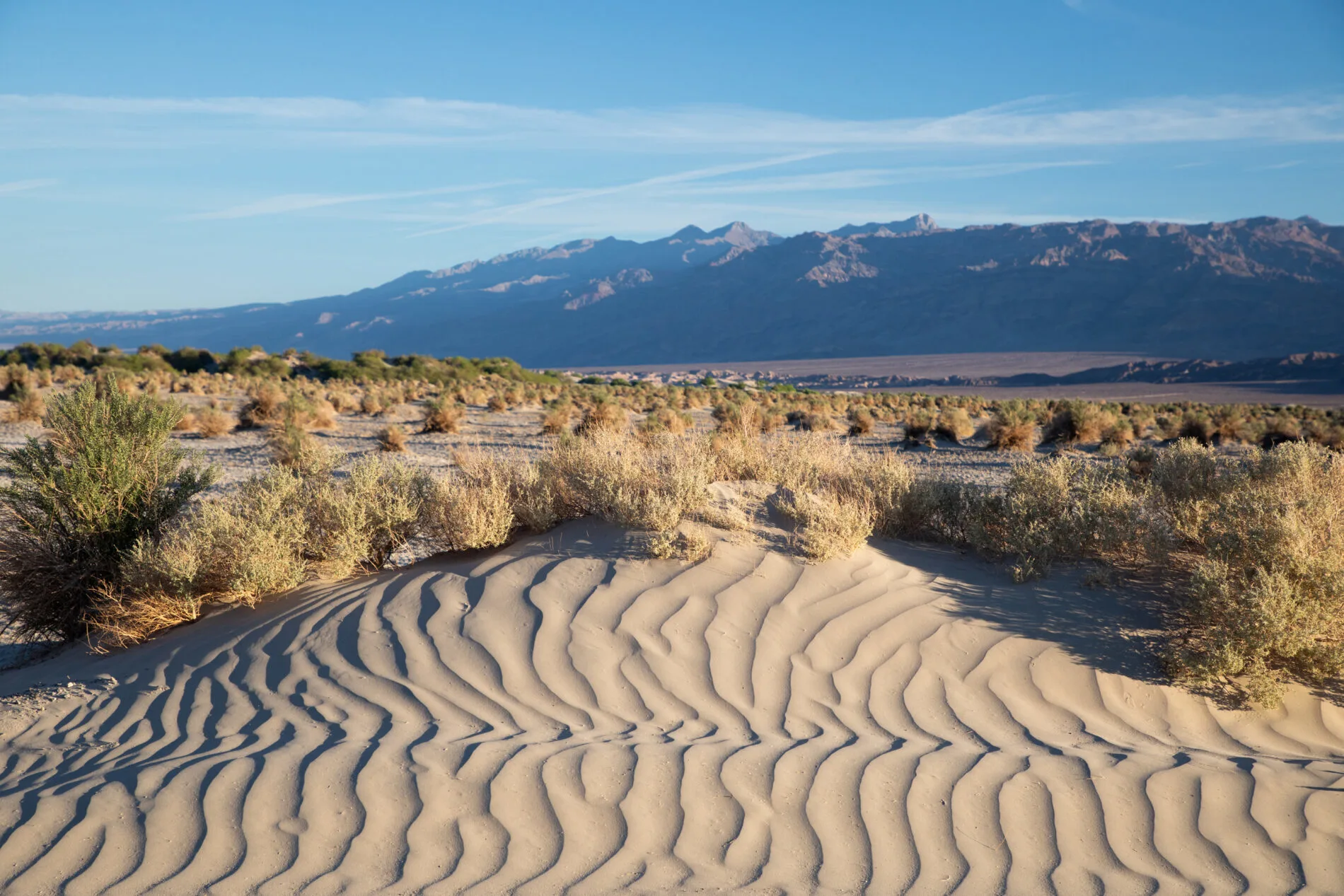
Why go to Death Valley?
Death Valley is the largest national park in the contiguous United States. It is the hottest, driest, and lowest place in North America. The landscapes and geography are simply stunning. Whether hiking, biking, or exploring by car, Death Valley National Park is sure to blow you away.
For us, it was a no brainer, we were road-tripping all over California during the spring in search of wildflowers and national parks. We’d just been to King’s Canyon and Sequoia National Park to see the giant trees and awesome mountain views. Death Valley was the next stop followed by Joshua Tree National Park further south.

Best Time to Visit Death Valley
We visited Death Valley during April, because we were getting cabin fever and needed to get out and go. The weather was perfect, not too hot, not too cold, and there were even a few wildflowers blooming, although it had been a very dry winter. In California, due to its mild climate, spring is the best time to visit Death Valley National Park
Dry sunny days run from an average of around 80 degrees in March to 100 degrees in May. Visiting in April, we were right in the middle of that range at 90 degrees. Hot enough? Sure but considering summer temps can rise well into the 120s those springtime temps are about as good as it gets. Plus, if the previous winter brought plenty of rain, the wildflowers will be out in all their glory.
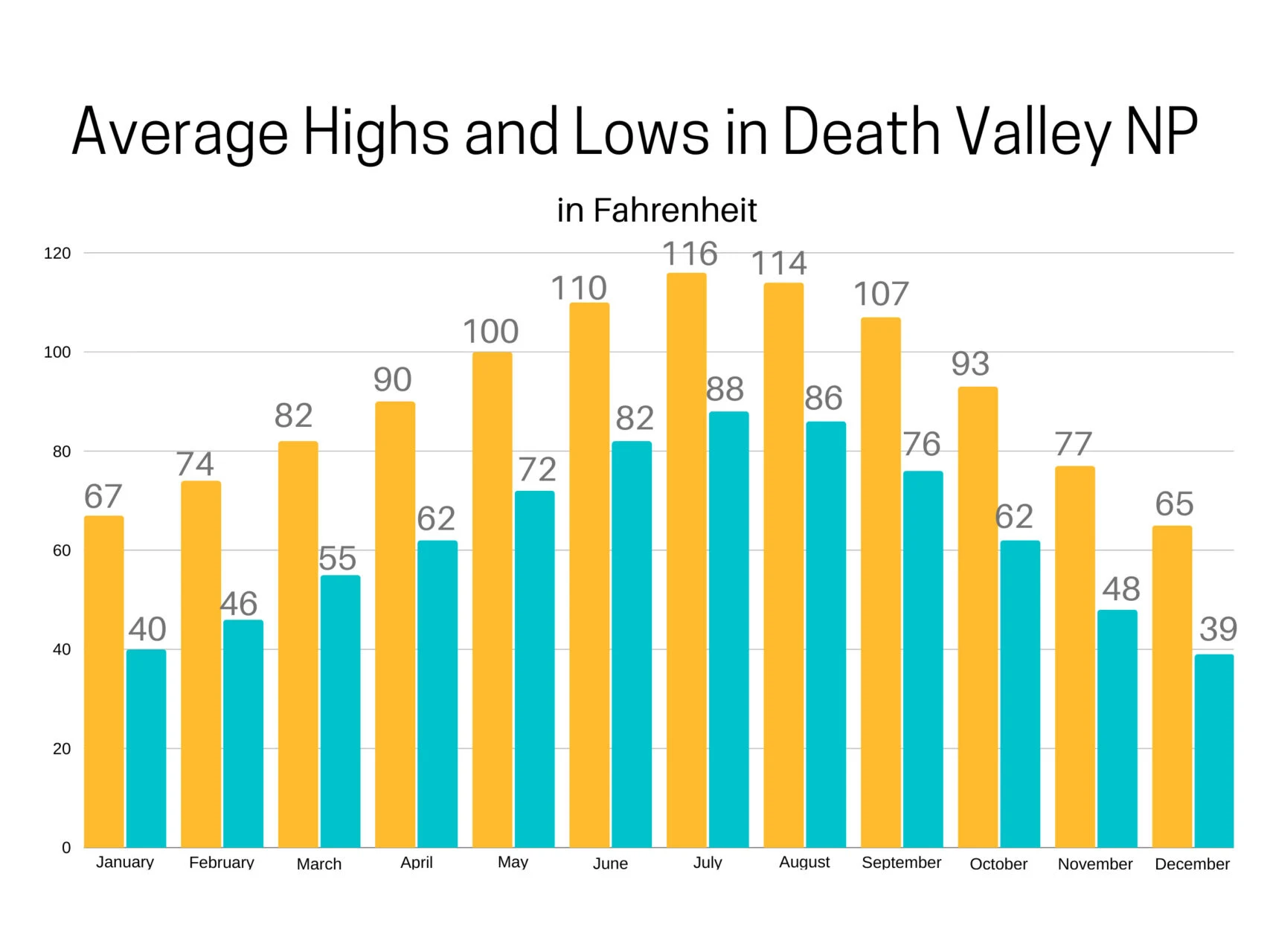
Weather in Death Valley
Known as the hottest place on Earth, Death Valley weather is extreme most of the year. It is also very dry with an average rainfall of less than 2 inches. However, when it does rain, flash flooding is likely. Luckily, we were there in April and the day was clear, sunny and calm. It was chilly as the sun was rising, but by 2 P.M. the thermometer had risen to a very warm 88 degrees.
Summer/Fall
Hot, sunny, and dry. Temperatures often pass 120 degrees during the day and sunset provides little respite, as temps only drop into the 90s. It does begin to cool down in fall with highs down into the 90s and lows in the 60s. Dust storms aren’t uncommon as hot dry winds pick up the sand and dust from the valley floor.
Winter/Spring
Winter and spring are about as pleasant as it gets in Death Valley. Day time highs range from the mid 60s at the beginning of winter to over 100 by the end of spring. Still sunny and clear, but nightime temps dip into the 30s, and it’s especially colder at higher altitudes.
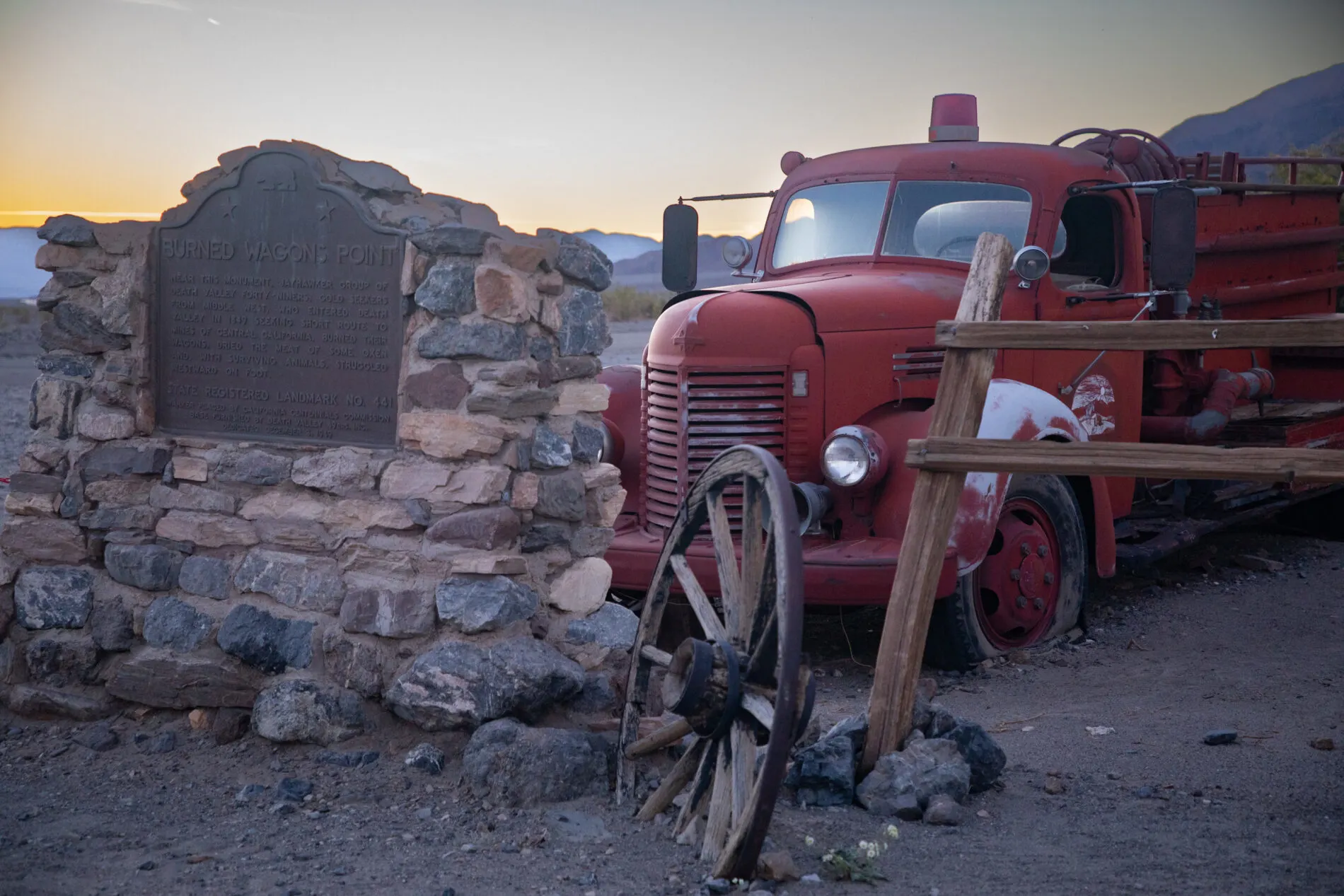
Activity Rating

Exploring the beauty and history of Death Valley National Park was more than we expected. It was full of highs and lows, elevation that is which was fun to notice along the way.
The valleys and scenery were just breath-taking, and spending at least a day there you find yourself having to choose what to do because there’s just so much.
The only downside is the costs…of everything from gas to snacks. It didn’t affect us or our experience, because we mostly brought our own, as you should!
Getting to Death Valley
While early pioneers ended up in Death Valley by mistake, that’s just not the case today. Death Valley National park is well signed and easily accessible from Las Vegas or Los Angeles. In fact, most visitors to the park are taking a detour on their way driving between those two cities. That road trip takes about 6 hours and leads right through the heart of Death Valley.
Las Vegas to Death Valley
Death Valley can, and often is, visited as a day trip from Las Vegas. The drive takes about two hours dropping into the valley from Death Valley Junction down to Furnace Creek, an elevation change of about 2200 feet. Drive on I-15 south out of Vegas to Nevada State route 160. Continue on NV-160 west to Pahrump then turn left on Bell Vista, following the brown signs to Death Valley National Park.
Sequoia National Park to Death Valley
While it’s only about 70 miles as the crow flies between the General Sherman Tree in Sequoia National Park to Stovepipe Wells in Death Valley, there is no direct route. In fact, drivers need to take a pretty long detour south to get around the mountains and head back east and north towards Death Valley. The total drive time here is about six hours.
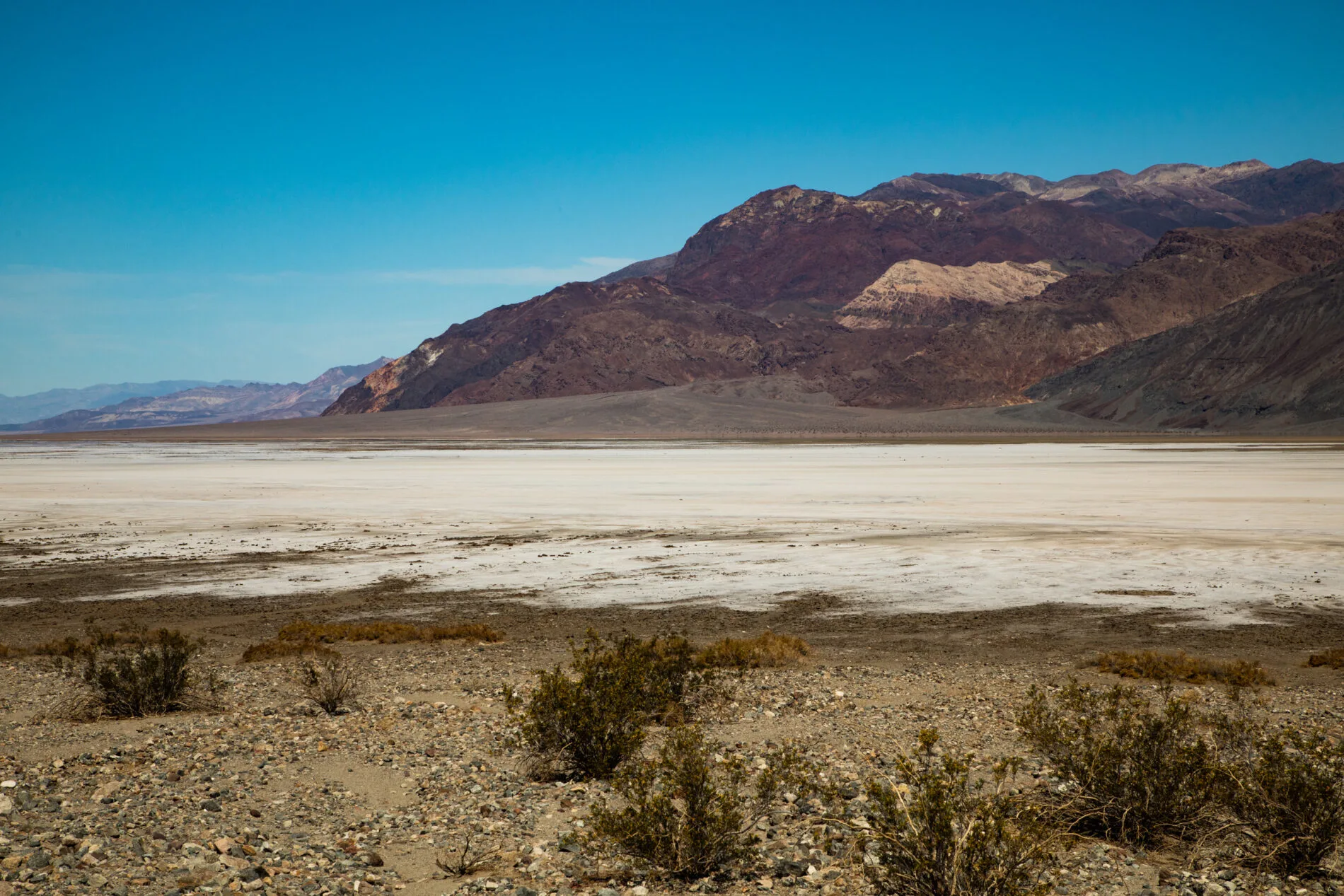
Los Angeles to Death Valley
The drive from Los Angeles to Death Valley National Park takes about four hours. The route makes its way through mostly arid, barren, and maybe even a little boring landscape. There are a few interesting sights along the way, one of the best being the Antelope Valley California Poppy Reserve outside of Lancaster.
Joshua Tree National Park to Death Valley
The route between Joshua Tree and Death Valley is one of our favorite desert drives. Leaving Twentynine Palms, the secondary roads lead north through the Mojave National Preserve to Baker on Interstate 15. From there travel north on route 127 to Shoshone and then route 127 into Death Valley.
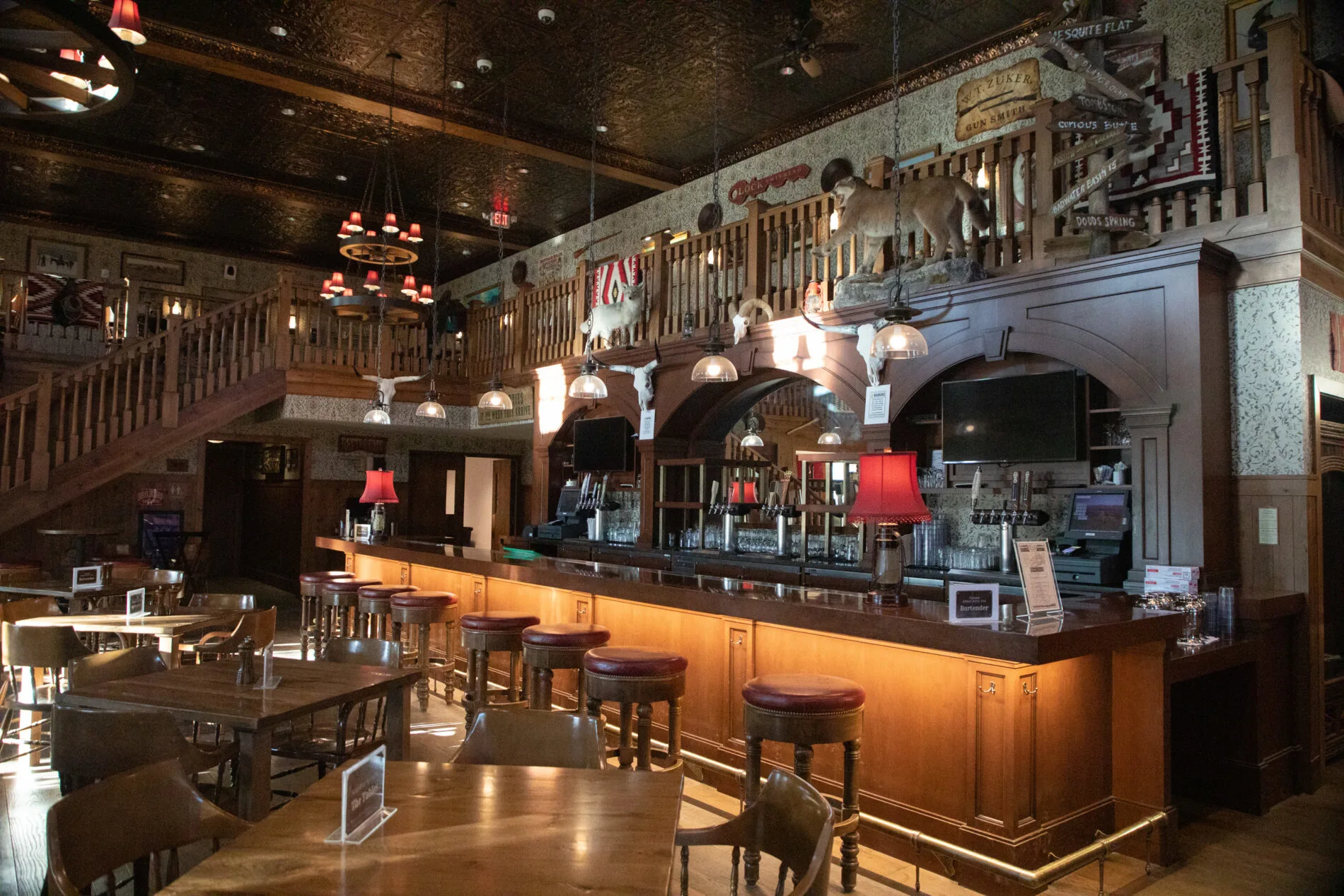
Driving Tips for Death Valley National Park
Did we mention that Death Valley National Park is huge? It’s the largest national park in the contiguous United States and measures 5,270 square miles. Needless to say, you can do some hiking and biking inside the park, but really to get around, you need a car.
Of course, we had one, and while we were driving through these alien landscapes, we developed a short list of driving tips just for you.
- Make sure that your car is in good condition. Did we mention how hot and dry it is in the park? You will want to make sure your car won’t overheat or break down.
- Make sure your spare tire is in good condition. Many of the roads are very even and serviceable in the park, but there’s also a bunch of places that they are less so. It never hurts to check that spare.
- Gas up before you go! This is a biggie! We noticed during our drive that the only gas station inside the park was charging over $8.00 per gallon for gas. Luckily, we’d fueled up before we got there. Whew!
- If you do have a breakdown or some other problem, stay with the vehicle and wait for help.
Where to Stay in Death Valley
There are a wide range of accommodations in and around Death Valley National Park. Everything from the swanky 1920’s historic Four-Diamond Inn, to classic drive up motels, RV campgrounds, and backcountry camping. The important thing to consider in choosing where to stay is which parts of the park you’re going to visit and how much time you have for visiting the park.
Hotels Inside the Park
One good option inside the park for travelers on a budget is The Ranch at Death Valley but their are many more to choose from. For a complete list of lodging in the park visit the National Park Service website.
Camping in the Park
Camping in Death Valley is mostly first come first served with automated pay stations at the campground. Reservations can only be made for spots at Furnace Creek, but only for the season from mid-October through mid-April. Only a few campgrounds are open during the hot summer months, so plan accordingly!
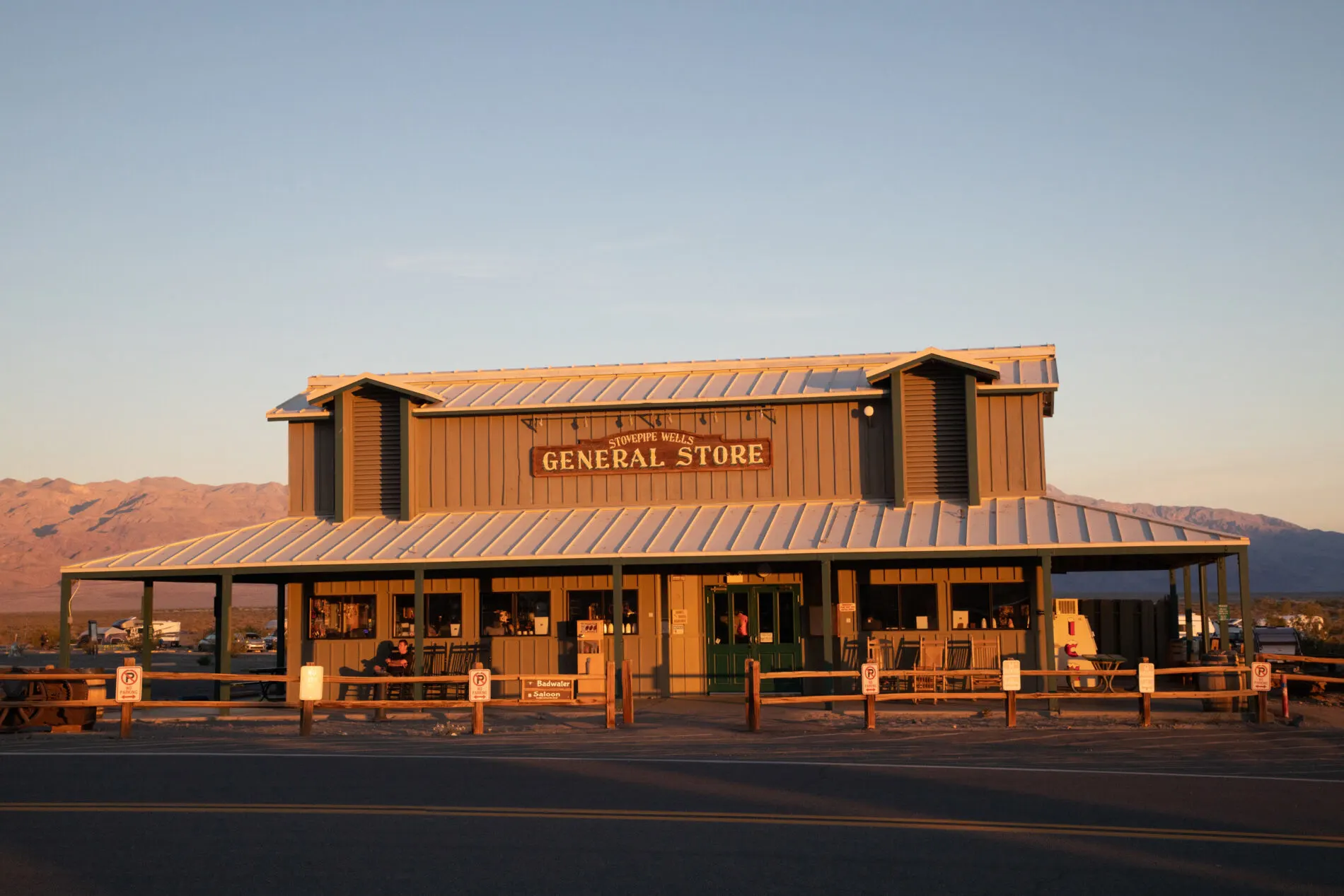
Hotels near the Park
There are good lodging options around the park at the various entrances. Our favorite is the Quality Inn Lone Pine Lodge near the Western side of the park. We don’t usually go for chain hotels, but this is an older hotel that was brought into the chain and still holds it old charm.
Wildlife in Death Valley National Park
This is the desert, so wildlife is sparse, but we did manage to spot a lone coyote early in the morning just before sunrise. Later in the day we saw roadrunners, lizards, and ground squirrels. We didn’t see any, but there are scorpions and rattlesnakes here as well, so be aware!
Best things to do In Death Valley
We spent most of our time in Death Valley hiking, looking for wildlife, wandering through the visitors center and museum at Furnace Creek, and exploring a few of the more accessible four wheel drive tracks. There’s a lot to do here, and things are spread out, so expect to do some driving. We’ll use Furnace Creek as a reference point for distances and driving times.
Here are some of the fun things to do while you are visiting Death Valley National Park:
- Zabriskie Point
- Badwater Basin
- Artist Palette
- Mesquite Flat Sand Dunes
- Furnace Creek Visitor’s Center
- 20 Mule Team Canyon
- Dante’s View
- Devil’s Golf Course
- Charkoal Kilns
- Enjoy the Night Sky

Zabriskie Point
One of the best sunrise and sunset spots in the park, Zabriskie Point offers stunning views of the surrounding badlands and the salt flats in the distance. The climb to the top of the hill from the parking lot is steep, and can be difficult in the heat, but the views are well worth the effort.
- Five miles from Furnace Creek
- Elevation 713 ft
Badwater Basin
These are the iconic salt flats of Death Valley, blinding white in the sunshine with incredible geometric formations. Walk out on the salt but don’t forget the sunglasses and a hat. The day we were hiking on the salt flats, there were quite a few other visitors. Most of the flats were just solid white salt with none of the crystaline patterns. Once we walked off to the side of the main trail, however, we found them.
- Seventeen miles from Furnace Creek
- Elevation -282 ft (lowest point in North America)

Artist Palette
The highlight of the Artist Drive Loop are the colorful, mineral rich hills known as Artists Palette. The drive itself is an amazing nine mile, one way paved road that twists, climbs and dives around and through the ancient volcanic region. This was a beautiful drive and we found a couple of great pullout areas to park and get out and explore on foot.
- Ten miles from Furnace Creek
- Elevation 220 ft at the vista point
Mesquite Flat Sand Dunes
Another excellent spot for sunrise and sunset views, the Mesquite Sand dunes are just off the main road past Stovepipe Wells. We arrived here just as the sun was peeking over the eastern mountains coloring everything with gorgeous shades of pinks and reds. We decided this would be a good place to get out and hike the dunes, maybe even slide down one or two of them.
- Twenty-three miles from Furnace Creek
- Elevation 10 ft (100ft at the top of the highest dunes)

Furnace Creek Visitor’s Center
This is the heart of the park and where most of the amenities can be found. There’s restaurants, lodging, camping, a visitor center and museum, and a small store with essentials and souvenirs. We really enjoyed the small museum and learning all about the mining history of the park. Luckily we started the day outside the park with a full tank of gas so didn’t have to fill up in the park.
- Food, gas, lodging
- Elevation -190ft
20 Mule Team Canyon
Another spectacular drive through and around the badlands. The one-way track is dirt and gravel and safe for most vehicles, however low clearance vehicles should avoid it. Not sure about your car’s clearance? Park the car and hike or bike; the route is only about 2.5 miles. We drove through here in
- Seven miles from Furnace Creek
- Elevation 854 ft
Dante’s View
For the most breathtaking views of the valley, head up, up, up to Dante’s View. This mountain top vista point is an easy drive and offers some of the best views for sunrise, sunset, or pretty much anytime during the day. It’s pretty high up, so this can be a good place to escape the heat of the valley below.
- Twenty-five miles from Furnace Creek
- Elevation 5,476 ft
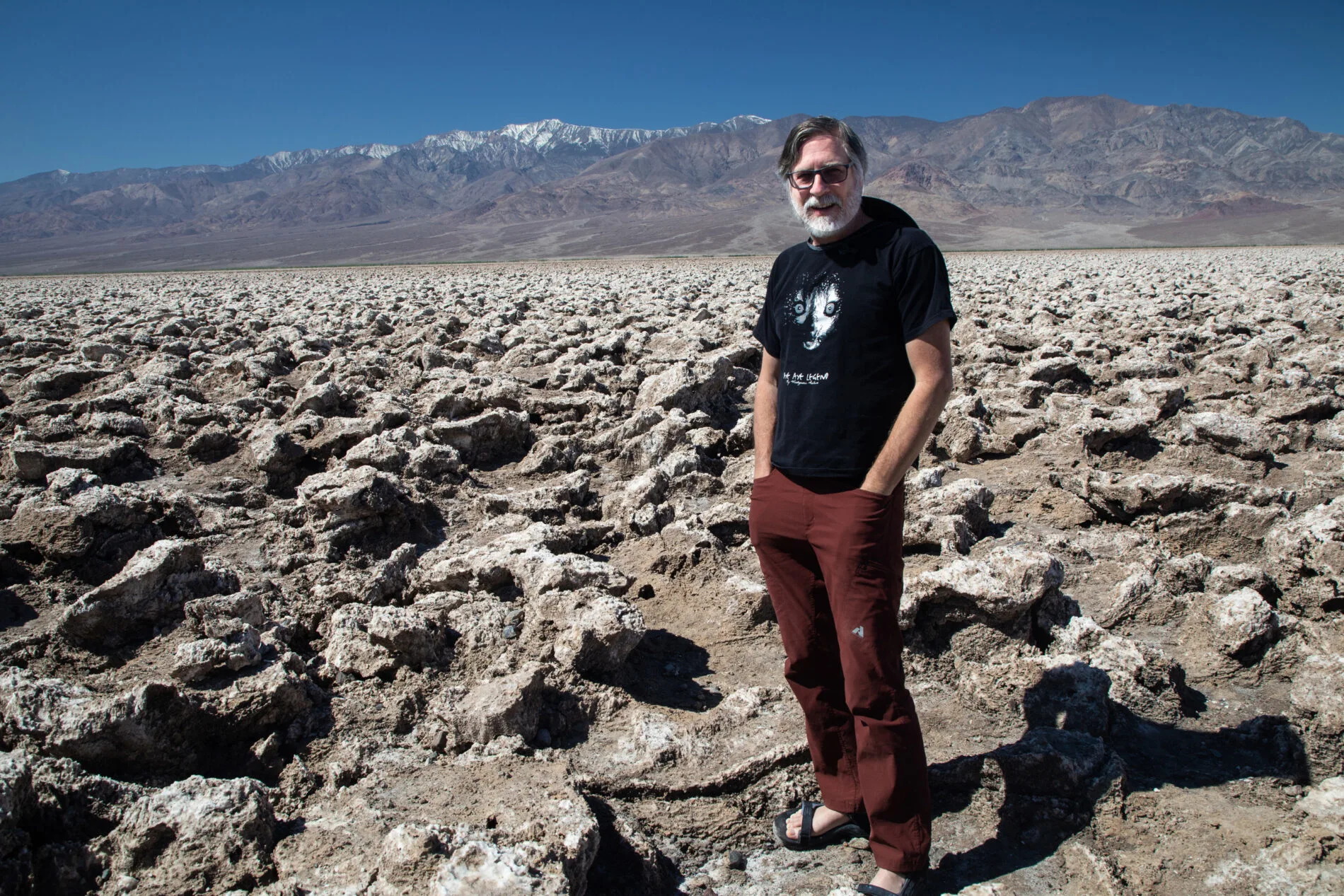
The Devil’s Golf Course
There isn’t really a golf course here, the name is just a play on words. If the devil wanted to punish golfers, this is where he’d send them. The ground is covered in broken, jagged salt crystalline structures that are hard enough to walk on, let alone play golf! Again, the salt structures were broken and trampled near the main parking area, but a little further down the road they were in much better condition.
- Thirteen miles from Furnace Creek
- Elevation -276 ft
Charcoal Kilns
One of the most interesting historical sites in the park, the Charcoal kilns are a collection of stone, beehive-shaped kilns used by the mining industry to make charcoal. There’s nothing else like this in the United States, and, being high up in the mountains, this is another great place to escape the heat and the crowds.
- Sixty one miles from Furnace Creek
- Elevation 6,800 ft
Enjoy the Night Sky
Nights in Death Valley are dark. In fact, the park has been rated at the highest level by the International Dark-Sky Association. The sky is clear and the air is clean. There’s really no better place in the US to get out and see the stars. Driving into the park in the early morning, well before sunrise, we just had to stop and get out of the car to marvel at the Milky Way spread out in the sky above.
Best Hikes in Death Valley
The best times for hiking in Death Valley are late fall through early spring. Temperatures at the lower elevations of the park are fairly mild then. It’s still dry, however, and hikers are advised to drink more than the usual amount of water. Carry, and drink, at least 2 liters for a short day hike in the winter.
Hiking at the lower elevations in the park is not recommended during summer months when the temperatures can easily exceed 120 degrees. Instead, head to higher ground and cooler temps.
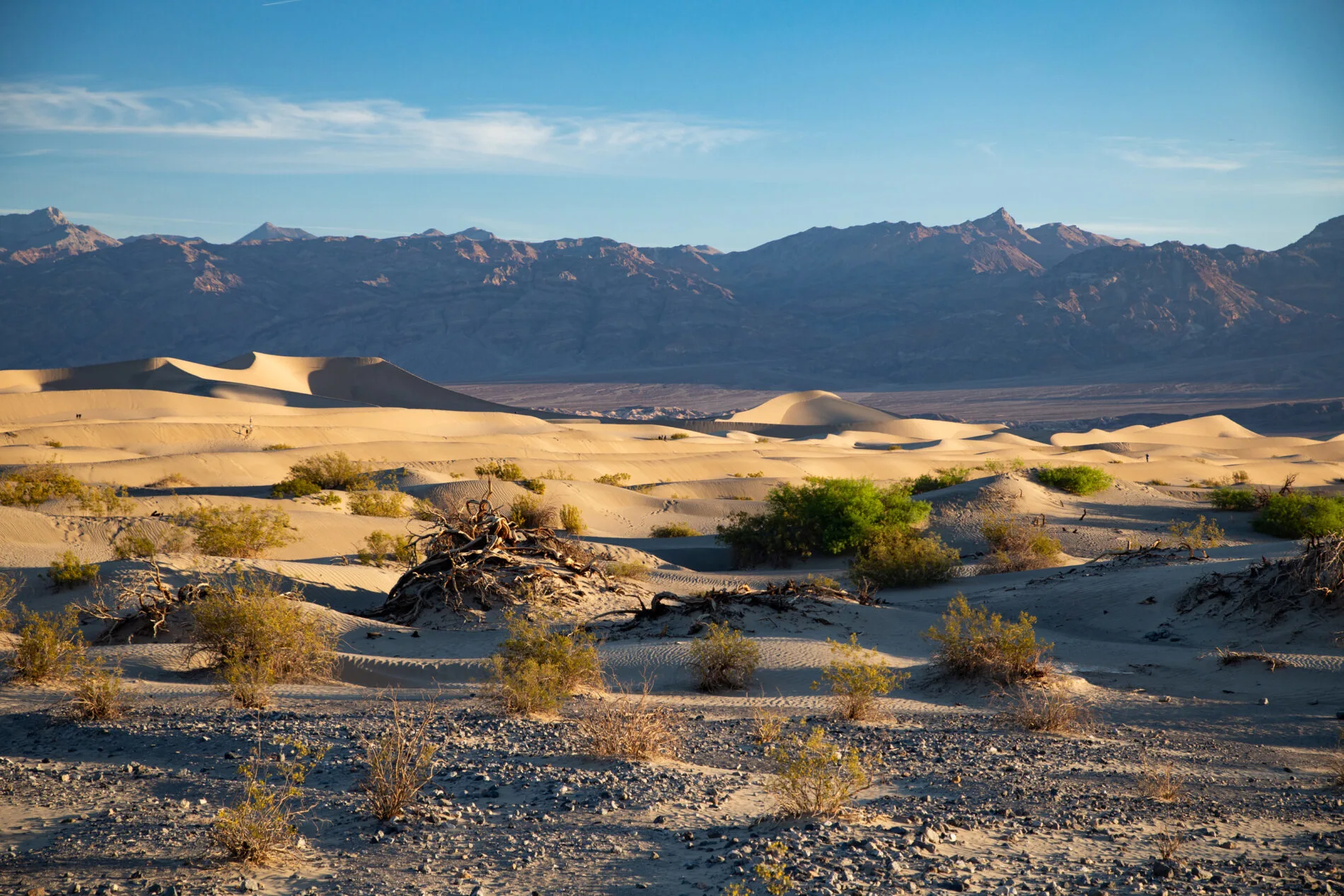
We went on a couple of smaller hikes on this trip, one around Zabriskie Point and the other at Badwater Basin. Both highly rated and for good reason, as the views were absolutely stunning. The day had heated up nicely so we were very glad to have full water bottles heading out in the stark sun.
Other hikes you might like to do include:
- Marble Canyon
- Golden Canyon
- Mosaic Canyon
- Darwin Falls
- Ubehebe Crater

Conclusion
Death Valley National Park is a land of extremes. A little bit of caution and preparation will go a long way in ensuring an epic adventure. Whether going for two hours, a day, or a week, keep an eye on the weather, the water bottles full, and your eyes open.
Author Bio: Jim Vail, is an avid traveler and explorer. He’s been to all fifty states and traveled around the world. He’s happiest shooting wildlife photography, camping, and hiking in the mountains, or fishing on the side of a river in Alaska.
